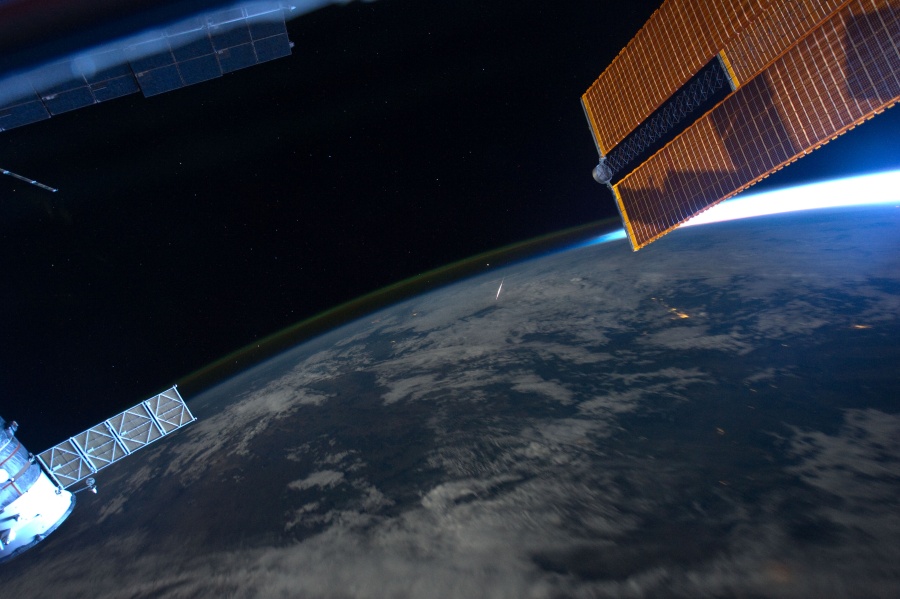Despite the Perseid meteor shower being more visible in the northern hemisphere, due to the path of Comet Swift-Tuttle's orbit,
the shower was also spotted from the exceptionally dark skies over ESO's Paranal Observatory in Chile.

Denizens of planet Earth watched last year's Perseid meteor shower by looking up into the bright moonlit night sky. But this remarkable view captured
on August 13, 2011 by astronaut Ron Garan looks down on a Perseid meteor. From Garan's perspective onboard the International Space Station orbiting
at an altitude of about 380 kilometers, the Perseid meteors streak below, swept up dust left from comet Swift-Tuttle heated to incandescence. The
glowing comet dust grains are traveling at about 60 kilometers per second through the denser atmosphere around 100 kilometers above Earth's surface.
In this case, the foreshortened meteor flash is right of frame center, below the curving limb of the Earth and a layer of greenish airglow, just below
bright star Arcturus. Want to look up at this year's Perseid meteor shower? You're in luck. This weekend the shower should be near its peak, with less
interference from a waning crescent Moon rising a few hours before the Sun.

Perseid Meteor Shower Peaks August 12 - Perseid Meteor Shower: Jim Gamble photographed this "nice, bright and
long magnitude -8.6 Perseid" using an all-sky camera at the El Paso Station of the Sandia All Sky Camera Network.
